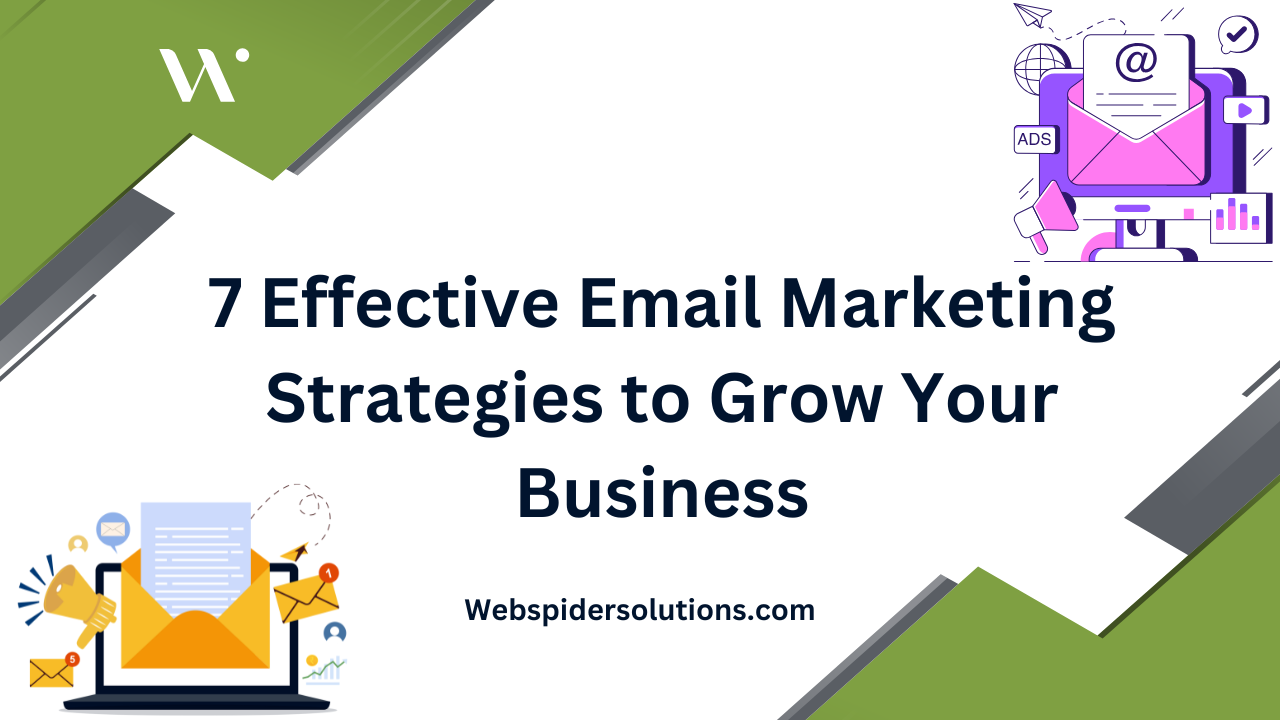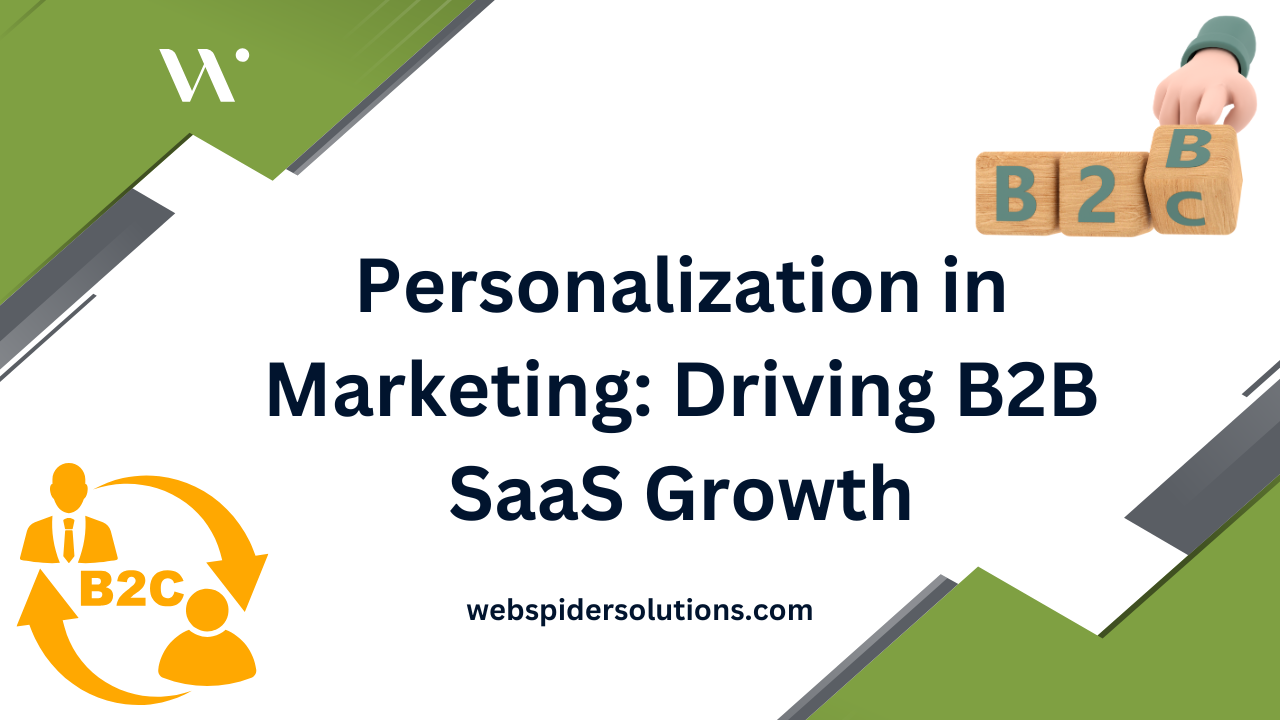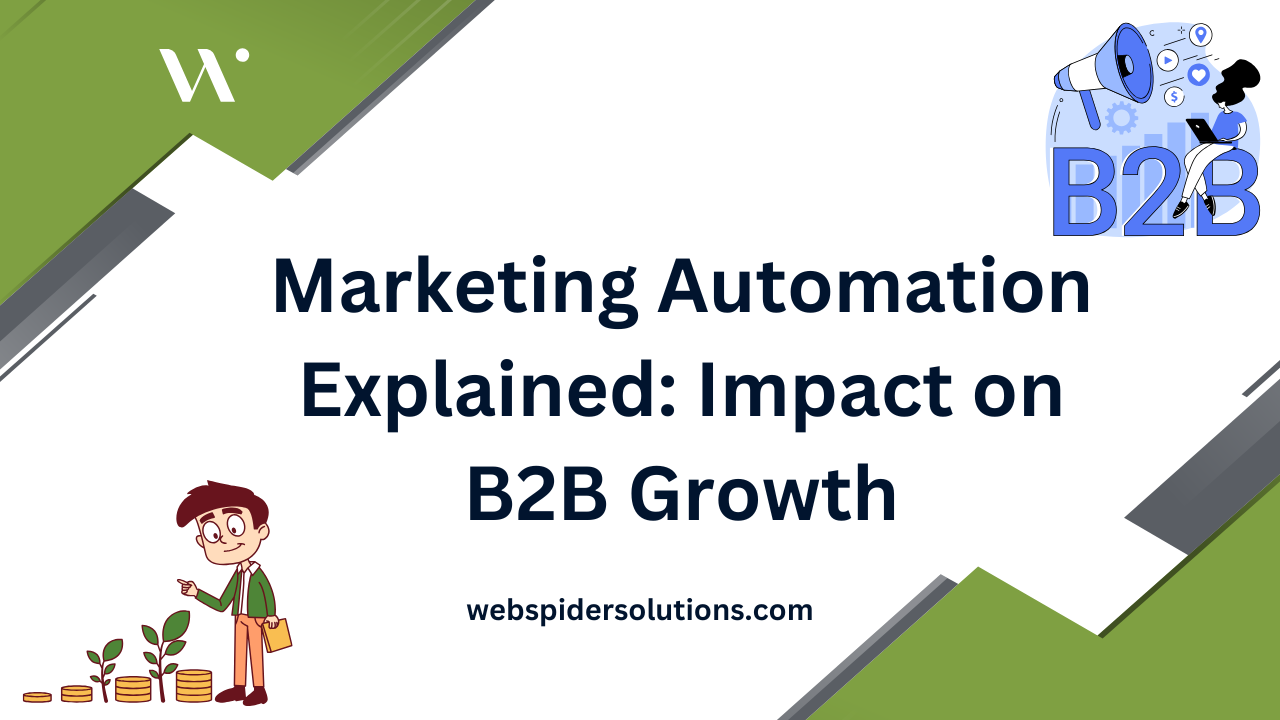Over 50 percent of email marketers see a significant jump in open rates when their messages are tailored to the right audience. Getting your emails in front of people who actually care about what you offer can make all the difference. Segmenting, personalizing, and tracking your email campaigns not only drives better results but also helps you build real connections with your subscribers. Learn how to upgrade your strategy with approaches proven to increase engagement and conversions.
Table of Contents
- 1. Segment Your Email List For Targeted Campaigns
- 2. Craft Engaging Subject Lines To Increase Opens
- 3. Personalize Content For Higher Customer Engagement
- 4. Automate Email Sequences For Consistent Outreach
- 5. Use A/B Testing To Optimize Email Performance
- 6. Monitor Metrics To Improve Campaign Effectiveness
- 7. Ensure Compliance With Email Marketing Regulations
Quick Summary
| Takeaway | Explanation |
|---|---|
| 1. Segment Your Email List | Divide your audience into groups for targeted messaging. This enhances engagement and effectiveness of campaigns by sending tailored content. |
| 2. Create Engaging Subject Lines | Craft short, compelling subject lines that capture attention. This encourages more opens and starts meaningful customer interactions. |
| 3. Personalize Email Content | Use customer data to tailor messages for individual recipients. Personalized content fosters deeper connections and increases engagement rates. |
| 4. Automate Email Sequences | Set automated email flows to ensure consistent communication with your audience. This saves time and nurtures leads effectively. |
| 5. Monitor Email Performance Metrics | Track key metrics like open rates and conversions to assess campaign success. Analyzing these metrics helps refine future strategies and improve effectiveness. |
1. Segment Your Email List for Targeted Campaigns
Targeting your email audience is like being a precision archer instead of someone randomly throwing darts. Email list segmentation allows you to deliver highly personalized messages that speak directly to specific groups within your subscriber base.
According to research from JETIR, segmenting email lists based on demographics and purchasing behavior dramatically enhances campaign effectiveness. By breaking down your subscribers into distinct groups, you can craft messages that resonate more deeply and drive higher engagement rates.
Key Segmentation Categories to Consider:
- Demographic information (age, location, job title)
- Purchase history and buying patterns
- Engagement level with previous emails
- Customer lifecycle stage
- Interests and preferences
Advanced machine learning models explored in JISEM Journal demonstrate how clustering algorithms can optimize email marketing reach. This means you are not just guessing about your audience but using data-driven insights to target them precisely.
Practically speaking, start by analyzing your existing customer data. Look for natural groupings and patterns that emerge from your current subscriber base. Most email marketing platforms offer built-in segmentation tools that can help you slice your list into meaningful groups without complex technical knowledge.
For instance, an online clothing retailer might create segments like “active sportswear buyers,” “professional work attire shoppers,” and “casual weekend fashion enthusiasts.” Each group receives tailored content that speaks directly to their specific interests and purchasing behaviors.
Remember that effective segmentation is an ongoing process. Regularly review and refine your segments as your audience evolves and your understanding of their preferences deepens. The more precise your targeting, the higher your email campaign’s potential for success.
2. Craft Engaging Subject Lines to Increase Opens
Your email subject line is the digital equivalent of a first impression. It determines whether your carefully crafted message gets opened or instantly deleted.
Subject lines act as the gateway to your email content. They need to be compelling, concise and spark curiosity. Think of them as a movie trailer that makes people want to click and discover more.
Key Elements of Powerful Subject Lines:
- Create a sense of urgency
- Highlight clear value
- Personalize when possible
- Spark curiosity
- Keep it short and punchy
A great subject line speaks directly to your reader’s interests or pain points. For instance, instead of “Monthly Newsletter,” try “5 Strategies to Boost Your Revenue This Week” or “Your Exclusive Discount Ends Tonight.”
Personalization can dramatically improve open rates. Using the recipient’s name or referencing their specific interests makes the email feel tailored just for them. Modern email marketing platforms make it easy to dynamically insert personal details.
Pro tip: A/B test different subject line approaches. What works for one audience might fall flat for another. Experiment with tone, length and emotional triggers. Some emails might benefit from humor while others need a more professional approach.
Remember that transparency matters. Avoid clickbait tactics that overpromise. Your subject line should authentically represent the email’s content. Trust is a precious commodity in email marketing.
Finally, consider email marketing strategies that help you refine your approach. Continuous learning and adaptation are key to mastering the art of compelling subject lines.
3. Personalize Content for Higher Customer Engagement
Personalization transforms generic email blasts into meaningful conversations. When your content feels like it was crafted specifically for each recipient, engagement skyrockets.
Research from JETIR highlights the critical importance of sending engagement-based emails tailored to individual user behaviors. This means moving beyond basic name insertions to create truly contextual experiences.
Core Personalization Strategies:
- Track individual customer interactions
- Use behavioral data intelligently
- Create dynamic content segments
- Develop triggered email sequences
- Implement predictive recommendations
Advanced personalization goes beyond surface-level details. According to arXiv, detecting personalized communication patterns can dramatically enhance customer connection. This means understanding not just who your customers are but how they interact with your brand.
Practically speaking, start by collecting granular data about customer preferences. What products do they browse? What content do they engage with most? Each interaction provides a clue to crafting more targeted messaging.
For example, an online retailer might send different product recommendations to a first-time visitor versus a repeat customer. A fitness app could customize workout suggestions based on past exercise logs. The key is making each email feel like a one-to-one conversation.
Technology now enables incredibly sophisticated personalization. Modern marketing platforms can automatically adjust email content based on real-time user data such as location, browsing history, and previous purchase patterns.
To truly excel, combine data-driven insights with genuine human understanding. Personalization is not just about algorithms but about creating meaningful connections that make your customers feel uniquely valued.
For more advanced strategies, explore our content marketing examples that demonstrate personalization in action.
4. Automate Email Sequences for Consistent Outreach
Email automation is like having a tireless digital assistant managing your communication strategy. It ensures your audience receives timely relevant messages without constant manual intervention.
According to research from the International Journal of Future Management and Research, email automation plays a crucial role in nurturing leads and building customer relationships. Automated emails like welcome messages and abandoned cart reminders can significantly improve engagement and conversion rates.
Key Email Automation Sequences to Implement:
- Welcome series for new subscribers
- Onboarding sequences for new customers
- Abandoned cart recovery emails
- Post purchase follow up campaigns
- Re engagement emails for inactive subscribers
The magic of automation lies in its ability to deliver personalized communication at scale. Wikipedia highlights the importance of segmenting, targeting, scheduling and tracking marketing messages to enhance outreach consistency.
Practical implementation starts with mapping customer journeys. Identify key touchpoints where automated emails can provide value. A SaaS company might create an onboarding sequence that guides new users through product features. An ecommerce brand could design abandoned cart emails that offer personalized incentives.
Modern email marketing platforms make automation incredibly accessible. Most offer drag and drop workflow builders that let you create complex sequences without advanced technical skills. You can set triggers based on specific user actions subscriber tags or time intervals.
Remember that automation should feel human not robotic. Craft messages that sound conversational and provide genuine value. The goal is to create a smooth helpful experience that feels personalized and timely.
For deeper insights into streamlining your marketing efforts, explore our guide to digital marketing automation.
5. Use A/B Testing to Optimize Email Performance
A/B testing transforms email marketing from guesswork into a precise science. By systematically comparing different versions of your email content, you can uncover exactly what resonates with your audience.
Research from Clarify AI highlights the critical importance of testing elements like subject lines and exploring strategies such as using emojis to boost engagement.
Key Elements to A/B Test:
- Subject line variations
- Email send times
- Content layouts
- Call to action phrasing
- Visual design elements
- Personalization strategies
A sophisticated approach to A/B testing goes beyond simple variations. arXiv research introduces advanced multi task learning algorithms that can optimize decision making in email marketing campaigns.
Practically speaking start by testing one variable at a time. Want to improve open rates? Compare two different subject lines. Curious about click through rates? Experiment with different call to action buttons or placements.
Most email marketing platforms now offer built in A/B testing tools that make experimentation straightforward. You can automatically split your audience and track which version performs better. Typical metrics to monitor include open rates click through rates and conversion rates.
Remember that statistically significant results require a large enough sample size. Aim to test with at least a few thousand subscribers to draw meaningful conclusions. Small sample sizes can lead to misleading insights.
For comprehensive strategies that complement your A/B testing efforts, check out our email marketing best practices guide to maximize your campaign performance.
6. Monitor Metrics to Improve Campaign Effectiveness
Email marketing metrics are your digital compass revealing exactly how your campaigns perform. Without tracking the right indicators, you are essentially flying blind in your marketing efforts.
Research from the International Journal of Future Management and Research emphasizes the critical importance of tracking and analyzing email marketing performance metrics to identify successful strategies and potential improvement areas.
Essential Email Marketing Metrics to Track:
- Open rates
- Click through rates
- Conversion rates
- Subscriber growth
- Unsubscribe rates
- Email delivery rates
- Revenue per email
Advanced research from arXiv suggests implementing sophisticated sender reputation mechanisms based on historical data analysis. This approach allows for more nuanced performance tracking beyond basic metrics.
Practically speaking start by setting clear benchmarks for each metric. What constitutes a good open rate in your industry? How do your current conversion rates compare to competitors? These questions will help you establish meaningful performance targets.
Most email marketing platforms provide comprehensive dashboards that make metric tracking straightforward. Pay special attention to trends over time rather than isolated data points. A single campaigns performance matters less than overall trajectory.
Consider creating a monthly report that tracks key metrics. This helps you identify patterns track progress and make data driven decisions about your email marketing strategy. Are certain types of subject lines consistently performing better? Do specific send times generate more engagement?
For a comprehensive approach to understanding your marketing performance, explore our guide to measuring marketing ROI which can provide additional insights into interpreting these critical metrics.
7. Ensure Compliance with Email Marketing Regulations
Email marketing regulations are not optional bureaucratic hurdles they are essential protections for consumers and businesses alike. Navigating these legal requirements is crucial to maintaining your brand’s reputation and avoiding potentially costly penalties.
Research from arXiv highlights the importance of distinguishing legitimate email practices from potential spam by analyzing traffic patterns and understanding regulatory frameworks.
Core Compliance Requirements:
- Obtain explicit consent before sending emails
- Include clear unsubscribe options
- Identify yourself accurately in communications
- Maintain detailed subscriber lists
- Protect subscriber personal information
- Honor opt out requests promptly
- Avoid misleading subject lines
Advanced research from another arXiv study provides mechanisms for detecting potential regulatory violations that can help businesses stay on the right side of email marketing laws.
Key regulations like CAN SPAM in the United States and GDPR in Europe mandate specific requirements for commercial email communications. These laws protect consumers from unwanted or deceptive marketing practices while ensuring businesses maintain transparent communication standards.
Practically speaking start by implementing robust consent mechanisms. This means using double opt in processes where subscribers confirm their email subscription twice. Maintain clear records of when and how each subscriber agreed to receive your emails.
Create a comprehensive email compliance checklist that covers all legal requirements specific to your operational regions. This proactive approach helps prevent accidental violations that could result in significant financial penalties.
For a broader understanding of ethical practices in digital marketing, review our guide to digital marketing ethics to ensure your strategies remain both effective and responsible.
Below is a comprehensive table summarizing the key strategies for effective email marketing discussed throughout the article.
| Strategy | Implementation | Benefits/Expected Results |
|---|---|---|
| Segment Email List | Use demographics, purchase history, engagement levels, and interests to group subscribers. | Higher engagement and campaign effectiveness. |
| Craft Engaging Subject Lines | Focus on urgency, value, personalization, and curiosity while A/B testing different approaches. | Increased open rates and reader curiosity. |
| Personalize Content | Use customer behavior data, dynamic content, and predictive recommendations. | Higher engagement and meaningful customer interactions. |
| Automate Email Sequences | Implement workflows for welcome series, onboarding, cart recovery, and re-engagement. | Consistent outreach and increased conversion rates. |
| A/B Test Content | Test variables like subject lines, send times, and call to action phrasing. | Improved performance through data-driven insights. |
| Monitor Key Metrics | Track open rates, click-through rates, conversion rates, and more. | Improved campaign effectiveness and strategic adjustments. |
| Ensure Compliance | Adhere to regulations like CAN SPAM with explicit consent and clear unsubscribe options. | Protection from legal penalties and maintained brand reputation. |
Elevate Your Email Marketing with Expert Digital Strategies
Struggling to stand out in crowded inboxes or unsure how to personalize your email campaigns for maximum impact The article highlights common challenges like segmenting your audience crafting compelling subject lines and automating sequences that truly connect with your customers. These pain points affect your open rates engagement and ultimately your revenue growth. By leveraging targeted segmentation and data-driven personalization you can transform generic broadcasts into meaningful conversations that resonate deeply and drive action.
At Web Spider Solutions we specialize in turning these email marketing strategies into powerful business results with tailored digital marketing services. Whether you want to refine your B2B outreach through smart segmentation or automate campaigns that nurture leads effortlessly explore our B2B Marketing Archives – Web Spider Solutions to discover proven approaches that amplify your message. Maximize your reach by integrating paid advertising with precise targeting as detailed in our Paid Advertising Archives – Web Spider Solutions. Ready to elevate your entire digital presence and convert email engagement into tangible growth Start now with a free consultation at Web Spider Solutions where expert guidance meets strategic execution.
Don’t wait to unlock the true potential of your email campaigns Take control of your marketing success today and see how focused strategies can grow your business.
Frequently Asked Questions
How do I segment my email list effectively for targeted campaigns?
To segment your email list effectively, start by analyzing your existing customer data to identify natural groupings based on demographics, purchase history, and engagement levels. Create distinct categories like ‘new customers’ or ‘repeat buyers’ to tailor your messaging, improving open rates by around 20%.
What are some tips for crafting engaging subject lines to increase opens?
To craft engaging subject lines, focus on creating a sense of urgency and highlighting the value of your email content. Keep your subject lines concise and test different approaches, aiming for a maximum length of 50 characters to maintain clarity and interest.
How can I personalize email content to boost customer engagement?
You can personalize email content by tracking individual customer interactions and utilizing behavioral data to create tailored messages. Start by analyzing which products customers show interest in, and personalize recommendations based on their browsing history, enhancing engagement by up to 30%.
What types of automated email sequences should I implement?
Implement essential automated email sequences such as welcome messages for new subscribers and abandoned cart reminders for potential buyers. Create an onboarding sequence that guides new customers through your product features, ensuring a consistent outreach strategy that keeps customers engaged throughout their journey.
How can I effectively use A/B testing to optimize my email performance?
To optimize your email performance using A/B testing, compare different versions of your subject lines or content layouts by sending them to separate segments of your audience. Focus on one variable at a time and monitor the results to identify which changes lead to improved open and click-through rates, aiming to achieve statistically significant results from at least 1,000 subscribers.
What key metrics should I monitor to measure my email marketing effectiveness?
Monitor essential email marketing metrics like open rates, click-through rates, and conversion rates to assess your campaign performance. Set specific targets for these metrics based on industry benchmarks, and regularly review your data to identify trends and make informed decisions to improve your strategy.











